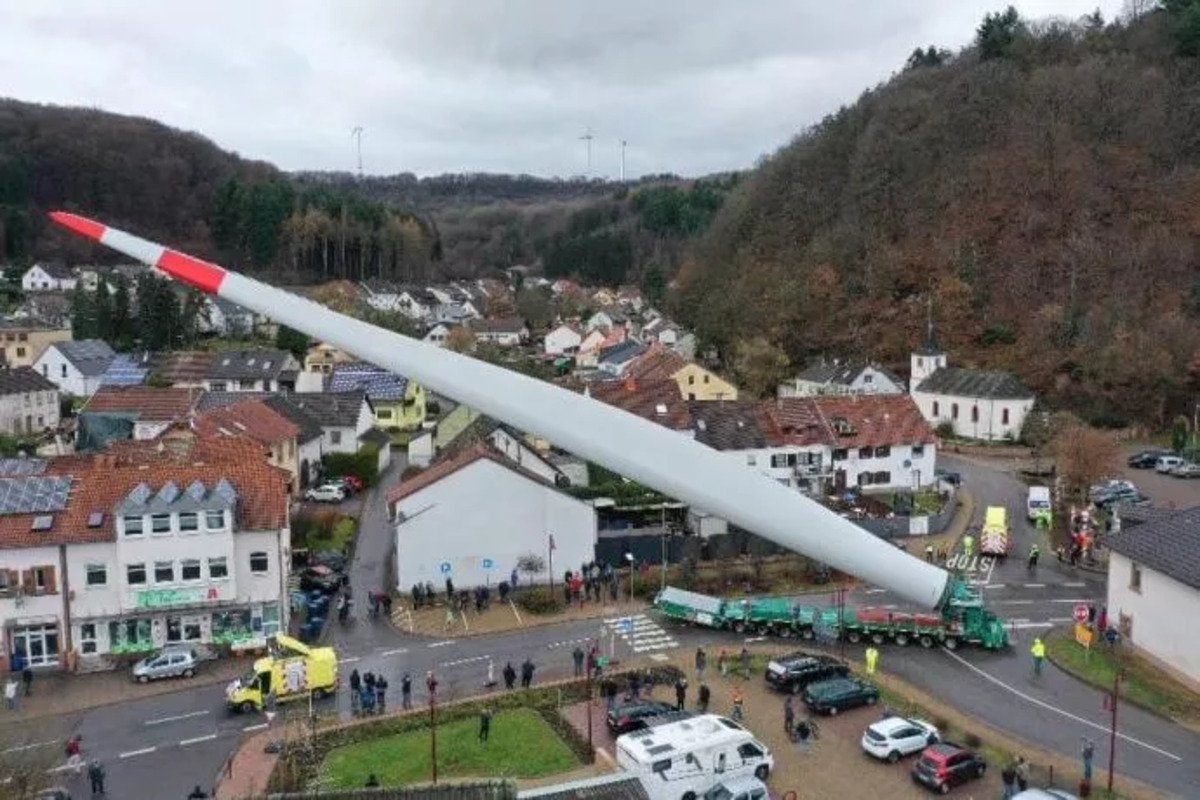When Scale Redefines the Road
At first glance, it looks unreal: a truck ferrying a single wind turbine blade the length of a city block. Yet it’s entirely authentic.
Modern blades can stretch to 80 meters, forged from ultralight composites that are still anything but light. Moving one turns a public road into a finely choreographed stage.
Engineering a Moving Horizon
The blade rides atop a modular platform trailer with dozens of axles, each able to steer independently. That agility is the difference between a clean sweep and a clipped curb.
On the most complex routes, the rear bogies are remotely controlled by an operator walking alongside, eyes on rotor ends and street furniture, fingers on a joystick that trims steering angles by degrees.
The City Becomes a Corridor
Neighborhoods are temporarily reimagined as transport corridors. Road closures are planned down to the minute to keep communities moving and the convoy safe.
Tight corners become puzzles of geometry: swing wide, dip the blade, rise over obstacles, and breathe past balconies and signage with centimeters to spare.
Logistics, But Laser Precise
A move like this begins months in advance. Teams map every turn, camber, and bridge, then simulate the trajectory until it is bulletproof.
Weather matters, too. High winds can turn a blade into a sail, so departures pivot around safe wind windows to reduce risk and sway.
The Playbook Behind the Spectacle
Beyond the steel and carbon fiber, the secret is coordination. Each professional focuses on a different risk, and together they stitch a safe passage through live cities.
- Route surveys with laser scans to confirm turning radii and clearances.
- Permits and escorts negotiated with local authorities and police.
- Utility lifts to raise cables, relocate signage, or trim branches.
- Timing windows that avoid rush hour and protect public safety.
- Real-time communications between driver, pilot car, rear steer, and spotters.
- Contingency plans for breakdowns, detours, or sudden wind changes.
People at the Heart of the Machine
What looks like a mechanical marvel is also a human one. Spotters read the street like a tide chart, and the rear pilot steers by feel and by radio.
The driver is not simply “driving.” They are conducting a moving orchestra where timing, angles, and speed must be in perfect harmony.
“It’s not just a load,” says a convoy supervisor. “It’s a promise traveling through a city—handled with patience, precision, and respect.”
Why the Effort Is Worth It
These blades feed a global appetite for renewable energy. Longer rotors harvest more wind at lower speeds, pushing costs down and reliability up.
The paradox is elegant: the path to clean power requires temporarily transforming ordinary roads into arteries for extraordinary cargo.
Innovation on the Move
Transport complexity is pushing fresh ideas. Some manufacturers experiment with segmented blades that assemble on-site, easing cornering and permitting.
Others explore local fabrication hubs near ports or wind farms, shrinking the distance between factory and field.
Respecting the Communities Along the Way
Residents meet these convoys on their doorsteps. Good operators minimize disruption by communicating early and often.
When people see the scale up close, the project becomes less abstract. Infrastructure feels real, not just a headline or a map pin.
More Than a Convoy
Call it a convoy, but it is also a bridge—connecting engineering ambition to environmental outcomes. The term “exceptional” finally earns its weight.
In the quiet roll of a massive blade through a sleeping town, you can hear tomorrow arriving—carefully guided, expertly planned, and profoundly purposeful.
